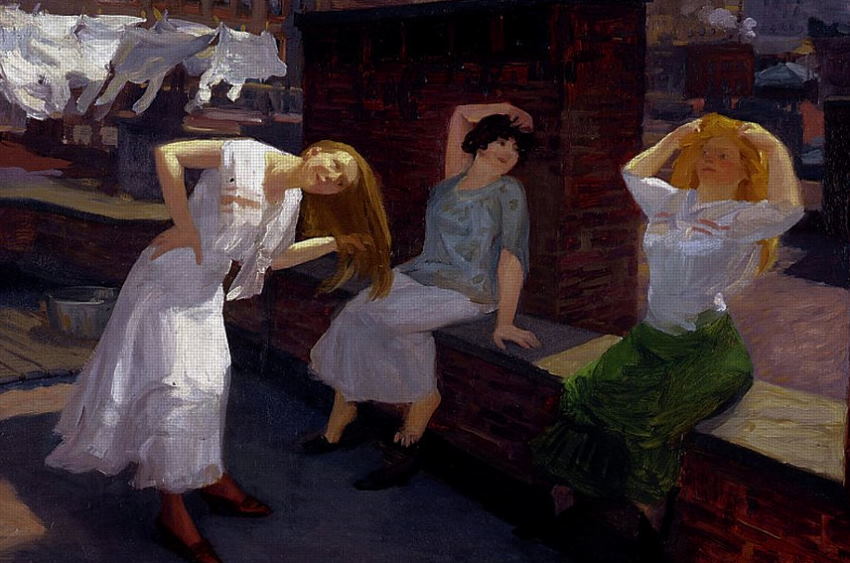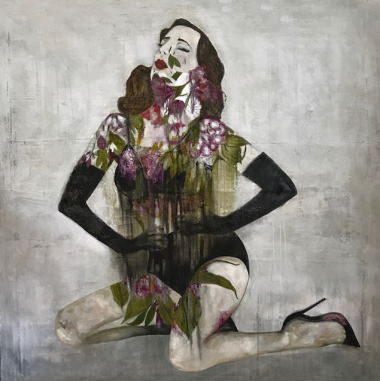Throughout the history of art, female figures have been depicted in a wide variety of ways. Though often used as symbols to represent beauty or idealized versions of innocence, some daring artists have chosen instead to portray women with confidence and power. Some of the most famous paintings featuring badass women with kickass hair are now classic depictions of powerful femininity from which we can draw strength today. From works by iconic painters like Pablo Picasso and John William Waterhouse, this post will explore striking images demonstrating what it means to be a woman who is unashamedly owning her strength.
Memorable hair moments in art history
Hair has been a source of artistic representation for centuries, and many works of art have featured memorable hair moments. In the Renaissance period, artists like Michelangelo and Rembrandt painted intricate hairstyles that showcased their subjects’ elegance and refinement. Later in the Rococo era, Jean-Honore Fragonard depicted women with elaborate ringlets cascading down their backs, often paired with lush floral decorations.
In the Modernist period, Pablo Picasso’s Cubist paintings distorted traditional hair shapes to create jarring visual effects. Salvador Dali famously used melting clocks as his trademark image in surrealist pieces such as The Persistence of Memory – but the hair was also an important symbol in his work.

The 20th century saw a move away from realism with the emergence of abstract art. Abstract painters like Wassily Kandinsky and Mark Rothko used vibrant swathes of color to represent hair in dreamlike compositions.
Today, contemporary painters continue to find new ways to express artistic ideas through depicting hair. Whether referencing traditional styles or experimenting with abstraction, hair remains an important source of visual inspiration in art – and each artist’s unique interpretation creates memorable moments for viewers.
Hair moments in art: a celebration of creativity and beauty
Hair has been an important part of art throughout history, with its importance often reflecting the values and traditions of a particular culture. From ancient sculptures to modern paintings, hair has been used to express beauty or strength, rebellion or conformity.
 In ancient times, hair was often seen as a symbol of power and prestige—Egyptian pharaohs wore elaborate wigs and headdresses to communicate their status; Roman emperors adorned themselves in laurel crowns; Greek gods had snakes entwined in their locks. Hair was also used to express vanity and sexuality—Venus’ tousled waves were legendary in medieval art, while Aphrodite’s golden tresses captivated Botticelli’s imagination.
In ancient times, hair was often seen as a symbol of power and prestige—Egyptian pharaohs wore elaborate wigs and headdresses to communicate their status; Roman emperors adorned themselves in laurel crowns; Greek gods had snakes entwined in their locks. Hair was also used to express vanity and sexuality—Venus’ tousled waves were legendary in medieval art, while Aphrodite’s golden tresses captivated Botticelli’s imagination.
In the Renaissance and Baroque periods, hair was often used to express emotion in paintings—from Michelangelo’s Sistine Chapel ceiling, where God presents Adam with flowing locks to signify his divine power, to Rembrandt’s self-portraits which feature various hairstyles from wild curls to sleek ponytails. During the Romantic movement of the 19th century, female figures were often depicted with unkempt tresses as a symbol of their untamed spirit and freedom from societal norms.
In modern art, hair is still an expression of creativity and individuality. Pop artists like Andy Warhol blurred gender lines by featuring women sporting short crops or long beards; surrealists like Magritte celebrated the beauty of the human form by using models with elaborate hairstyles, while abstract expressionists often used hair to convey feelings of unrest and anxiety.
From classical works to contemporary art, hair has been celebrated in all its forms throughout history—transcending barriers of culture and time to represent beauty, power, and individuality. So the next time you admire an artwork or sculpture featuring a figure with impressive locks, remember that this is more than just a simple hairdo—it’s an homage to creative expression and timeless beauty.
